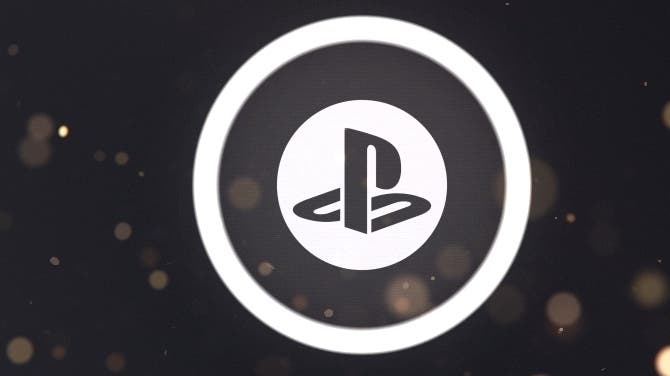Our first look at the PlayStation 5 user interface - and it could be a game-changer
Cards, Activities and the Control Centre have the potential to change the way we play.
When was the last time we saw a game-changing reveal in the immediate run-up to the launch of a next generation console? Sony may well have pulled this out of the bag with today's new State of Play, concentrating on the much-anticipated PlayStation 5 user interface. Sony's menu systems have always been polished, beautiful pieces of work, but for the next generation, this is married with a truly impressive range of in-game functions. There are some impressive new improvements to existing options but also things we have never seen before in a console. Digital Foundry had the chance to see the interface ahead of time and to talk about the new system with SIE's Hideaki Nishino, senior vice president of platform and planning management.
And at the basic level, the user interface itself does not disappoint. We've had hints of sorts about the look and feel of the system UI in prior Sony online events, with a smart menu system rendered in glittering bronze - and we can now confirm that the whole presentation renders at a native 4K and even supports native HDR out of the box. We also get our first look at the home page, where games and media apps each get their own portion of the UI. There's a focus on instant access to everything you need - delivered thanks to the new, faster Zen 2 CPU cores and the ultra-fast SSD solution, supplemented by a caching system to reduce potential network lag. On top of that, certain apps like the PlayStation Store are now fully integrated into the system, meaning no delay when you access them.
But the cool new stuff really starts to kick in when you highlight a specific game - it's at this point where we start to see the 'cards' associated with the title, and the most crucial card type are Activities. Essentially, Activity cards take the form of curated entry points into the game, authored by the developer - 'ready to wear' challenges that get you straight into the action with specific objectives highlighted - and even an estimate on play time offered. In the State of Play video, we see how just fast activating an Activity is: we are running from a suspended version of the game (it's not a cold boot), but regardless, thanks to presentational flourishes, any hint of loading is cleverly obscured - you're straight into gameplay.
Also impressive is how the user can return to what's known as the Control Centre at any time during play, able to access any and all cards seamlessly - and that includes what's known as Official Game Help. This takes the form of context-sensitive streaming videos that get you past the current tricky spot, without the user potentially being exposed to spoilers. These videos can be run full screen or while you are playing, via a picture-in-picture mode. You can even choose where the video sits on-screen in that latter option. This won't apply to all games, and it seems that where it is available, it's flagged as exclusive for PlayStation Plus users.
"Actually, to me, it's like unlocking the hidden treasures in the game," Hideaki Nishino says of the new cards system. "So the PS5 UX is centred around the getting of players into the game easier and faster. And as you know, you can see they're making their available playtime more meaningful. We really care about [this]... it's an investment. I can play with my kids, I can play with my wife, but I want to play games. That's a huge, huge investment, it's a part of my life.
"So with the PS5 user experience, we are re-imagining the way the game works together with the hardware and network, delivering a truly next generation experience. The UX is completely centred around the player and we're connecting players with gameplay - and a passionate community of gamers. So that's the philosophy. We worked on this over the last several years, and we got together and as a single team across London, the United States and Tokyo, and we are happy to show you the result of that."
The community aspect is also integrated into the Control Centre and therefore into gameplay - voice chat is easily accessible, and it's a piece of cake for party members to share their screens too, even if it's of a different game. In the State of Play video, we take a break from playing Sackboy Adventures and watch another party member streaming Uncharted: The Lost Legacy (being a system level feature, back-compat PS4 titles should share some of the features of the new UI). Just like the game help videos, this stream can be set up in a side-by-side configuration with gameplay, or run picture-in-picture, with the user able to choose where the video sits.
So essentially, what we're looking at here is a new level of accessibility and interaction with games from the front-end, via resume from rest mode (where the system jumps straight back into the Control Centre) and from within the game itself. There is the sense that with Sackboy Adventures, we are perhaps looking at one of the most fully featured examples of the level of interaction available - certainly in the launch period. Hideaki Nishino confirms that there is a level of authorship required by the developer to get the most out of the tools Sony provides.
"So, Activities is the way the inside of the game context is exposed - we are asking developers to expose this data so it can be integrated with the system UI and that can be shown as a card, so that's one thing," he says. "The other one is Official Game Help - so we can show the Official Game Help video when you are stuck in the game, you can bring up the cards, and you can watch it... So these are all from metadata coming out from the games and linking back to the associated data. So you're right, we are asking publisher and developer to provide us the best insight information to the system. But without having the user going into the game deeply, the user can see it and the user can jump back into the game quickly."
Basically, it's a way for developers to shine a light on many of the challenges and activities within a game, that may otherwise go overlooked, but of course, there's nothing to stop the player making their way through the title as they would ordinarily, using the Control Centre simply for non-gaming functions, such as accessing party features. However, Activities can take any number of forms. Remember Need for Speed: Hot Pursuit and the way that Autolog regularly tossed new challenges at the player, especially when someone on your friends list beat your score? The PlayStation 5 UX can do that too - and it'll crop up organically on the front-end without having to boot the game.
I was concerned that such a rich level of functionality may well be taking system resources away from the game developer, whether that's in terms of CPU time, GPU or memory. Sony isn't giving away any numbers on what the system allocation is, and neither is it confirming how much useable space is available on the SSD. However, the aim is to deliver the new features with the same kind of system allocation developers currently work with on current-gen platforms.
"Hardware resource is limited and defined, and it's shared between the game and our system side," confirms Hideaki Nishino. "We define how much of the resource can be spent by the system side, but it's a similar amount [to] what we are doing with PlayStation 4. That's a philosophical thing: we are trying to give as much power and resource as possible back to the game side, because the game is the core, and then we bring Control Centre and Activity Cards while minimising the [system] resources we spend."
There are further Easter Eggs to watch out for in the State of Play video. For example, during the section on using Control Centre to access multiplayer functions, we see that there's a joinable game of Destruction All-Stars taking place - and for the user, it's just one button press away. We'll need to confirm this when we see the actual video (as opposed to a somewhat choppy low resolution version beamed over Microsoft Teams!) but it looks like the load process from button press to the arrival of the "Sony Interactive Entertainment Presents" splash screen is a process that lasts around just eight seconds. It's also refreshing to see that there are no protracted logo screens, we're straight into the action (Sony has confirmed that we're seeing a cold boot of the game here, not any kind of system resume function).
It's in Destruction All-Stars that we get a hint of the kind of sharing functionality on offer via the new Create button on the Dual Sense controller, and there's confirmation that both screenshots and video are captured at 4K resolution. We don't get to see how captured media can be filtered and processed before it's shared, but there is confirmation that Control Centre can be used to send this media to parties and external social media platforms like Twitter. Another nice touch here is how voice dictation is used to add messages to media - no microphone is required, as there's one built into the Dual Sense pad. The age-old problem of laborious joypad typing is finally addressed, assuming the quality of the dictation holds up, of course.
Ultimately, everything we've seen so far of the new user interface suggests a degree of innovation that may well border on outright revolution, depending on how developers choose to use the tools delivered by the new cards system. In theory, the sky's the limit, but certainly in the here and now, the focus is on easily accessing more content within a particular title - and maximising the return from what may be a limited amount of gameplay time. But the good news is that it's all wrapped in a high quality, polished menu system that will be familiar to PlayStation 4 gamers, while evoking memories of the slick PS3 user interface.
"We do care about the beauty of the UI, which is, of course, going to be of a PlayStation quality," enthuses Hideaki Nishino. "But at the same time, we really want to make sure the customer can fully utilise their time for engaging with the game. And there was a conversation with developers and creators: they sometimes feel kind of sad, because now the game scope is huge and the game world is huge - and people may not see the whole picture of the game. So how we can bring them more into the games? I know, there is a menu system and a scene system in the game that can show the customer the various options in the game.
"However, it should be a really, really great moment. With the cards, you see the options, what you could enjoy. And with challenges in the dynamic update, they kind of force me back into the gameplay. It's a really great experience, having the user more engaged with the game. This system is [there] to support great play and a great time. I speak to my team, it's like a theatre setting - it's there to energize all the actors on the stage, to perform at their best. And you should not notice what's going on behind the scenes."
One final piece of good news. We're firm advocates of game preservation at Digital Foundry. We believe that when you buy a physical game, you should be able to install and play it offline. The code on the disc matters. PlayStation 4 will always let you run that code, patches are never mandatory except for totally online titles - and Hideaki Nishino says that the same is true for PlayStation 5. Not being able to run the disc code would be "out of the question". There will be a PS5 Digital Edition, of course, but beyond the brand new bells and whistles with the new UI, it's good to see that the commitment to the physical disc is still there for those who stick to the standard console.










